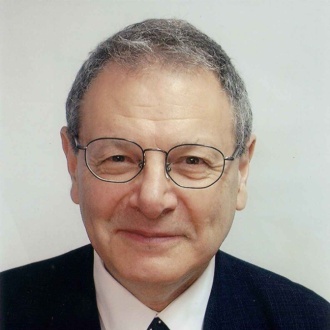Asking for Help?
As a rabbi in a small community, I am often approached by congregants, who need to recite the Kaddish, for help with Minyan recruitment. Before I respond to the call of duty and agree to recruit, I always ask the congregant to go beyond the call of duty and rally his own friends first. Often the congregant will recruit one or two friends, leaving me to recruit the balance, which raises the question, why do I bother asking for help? (1)
The same question could be asked of G-d during a curious episode that occurred during the building of the Tabernacle and its golden candelabra. G-d described the design to Moses, but Moses did not understand. G-d explained it again, drew a picture and even offered to help build it, but all to no avail. In the end, Moses tossed the gold into the fire and the candelabra miraculously emerged. (2)
G-d must have known that he would eventually build it himself, so why did he ask Moses to build it?
Understanding the Design
A simpler question is what was so difficult about the design that G-d, the greatest teacher of all time, could not make Moses, the greatest student of all time, comprehend?
Moses actually understood the design very well. There were seven branches and forty- nine adornments. What he failed to comprehend was why these separate components were meant to be chiseled from a single bar of gold. The idea that plurality and singularity can be wed defies human logic. (3)
The mystics taught that the seven branches and forty-nine adornments corresponded to the seven weeks, or forty-nine days, between Passover, when our ancestors were redeemed from Egypt, and Shavuot, when they received the Torah at Sinai.
corresponded to the seven weeks, or forty-nine days, between Passover, when our ancestors were redeemed from Egypt, and Shavuot, when they received the Torah at Sinai.
The Torah instructs us to count the days of this seven-week period. Seven weeks amount to forty-nine days, yet in a separate verse the Torah instructs us to count fifty days. How can we count fifty days in a forty-nine day period? The Mystics tell us that the fiftieth day was counted by G-d on the day he gave us the Torah. (4)
Beyond the Human Grasp
Receiving the Torah requires forty-nine steps of preparation. Only after completing all forty-nine steps do we become worthy of receiving the fiftieth step, the Torah, that G-d bestowed upon us from above.
Every law in the Torah is of such complex scholarship that it can be understood from as many as forty-nine different perspectives. It requires tremendous diligence to comprehend and internalize such depth. It requires a quest to grow every day until we reach the highest wisdom accessible to the human mind. The forty-nine-day count thus represents the quest.
There is another element in Torah that is beyond our intellectual grasp, namely, G-d, its author. The Torah’s information can be grasped intellectually, but connecting with its author requires humility.
The fiftieth day, the day that only G-d can count, represents the divine aura of the Torah’s authorship. This is an element that we cannot count for ourselves. This is an element we will never understand. Yet, if we count forty-nine days, if we apply ourselves to the forty-nine perspectives of Torah, G-d bestows the fiftieth perspective from above.
When we reach the fiftieth day, we acquire an entirely new perspective. We then realize that the forty-nine perspectives are not unique to each other, in fact they all flow from a common foundation, a single kernel of divine wisdom that shines through a prism of forty-nine colors. We cannot arrive at this wisdom on our own, we receive it from G-d, who bestows it from above.
Becoming a Vessel
If the goal of Torah study is to connect to its author and if such connection can never be achieved on our own cognizance, but must be bestowed from above, then why should we study the Torah in the first place, let G-d bestow it from above? In other words, what do the forty-nine steps accomplish if they fail to catapult us to the fiftieth?
They turn us into recipients. You see, G-d doesn’t want scholars, he wants students. He doesn’t want accomplished teachers, he wants elevated souls. He doesn’t want our profound comprehension, he wants our transformed characters.
G-d’s purpose is that we become vessels and conduits for his holiness, and to do that we must apply ourselves. The toil, the yearning, the desperation, the earnest desire for G-d and the willingness to go beyond the call of duty, is what turns an ego into a vessel. This is accomplished during the forty-nine days. (5)
Elegance of Singularity
The candelabra’s forty-nine adornments were beautiful and meaningful. Their graceful forms, flowing symmetry, profound meaning and metaphoric value inspired Moses to great passion. Each was significant, each contributed, each deserved its own place.
“Why must they all be chiseled from a single bar of gold,” his tender soul wailed. “Why blemish their distinctive beauty by the stark uniformity of a single bar?” The adornments were unique and Moses grieved for a pluralism that he felt should have been celebrated.
Pluralism and singularity are polar opposites and only G-d can wed them. Moses understood the forty-nine adornments, but the one piece of gold was the secret of the fiftieth, a secret only G-d could understand.
No explanation could make Moses understand, yet G-d tried to explain it and Moses tried to grasp it over and over again. This diligence was Moses’ true hallmark and in its merit Moses became G-d’s conduit for the light of the candelabra and for the light of the Torah. (6)
This is also why I ask my congregants to recruit their friends for the Minyan. They may not rally many friends but I know that their efforts help them appreciate, if not identify with, the significance of prayer and of Minyan. Who knows? They may even respond with enthusiasm the next time they are themselves recruited.
Footnotes
- A Minyan is a quorum of ten Jewish men, required to recite the Kaddish, a memorial prayer for the dead.
- Tanchumah Shemini, ch. 3 and Bamidbar Rabbah, 15:4. See also Rashi (R. Shlomo Yitzchaki, Troyes France, 1040-1105) and Ramban (Nachmanides, R. Moshe Ben Nachman, Spain, 1194-1270) on Exodus 28: 31 and on Numbers 8: 4.
- Sefer Halikutim, Erech Menorah, p. 861 (R.Menachem M. Schneerson, Third Rebbe of Lubavitch, 1789-1866). For a slightly different interpretation see Likutei Sichos, Vol. I, p. 174 (R. Menachem M Schneerson, Rebbe of Lubavitch, NY, 1902-1994).
- Likutei Torah Bamidbar, p. 10a (R. Schneur Zalman of Liadi, founder of Chassidus Chabad, 1745 – 1813).
- See Sfas Emes, 1871 (R. Yehudah Aryeh Leib Alter of Gur 1847–1905) and Maharal Al Hatorah, Exodus 28:31 (R. Yehudah Loew, Prague, 1525, 1609).
- See Shemos Rabbah 36: 2-3. See also Bamidbar Rabbah 15: 4-5.
Tags:
God,
humanity,
humility
 corresponded to the seven weeks, or forty-nine days, between Passover, when our ancestors were redeemed from Egypt, and Shavuot, when they received the Torah at Sinai.
corresponded to the seven weeks, or forty-nine days, between Passover, when our ancestors were redeemed from Egypt, and Shavuot, when they received the Torah at Sinai. 






















